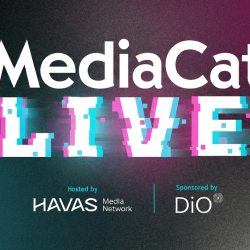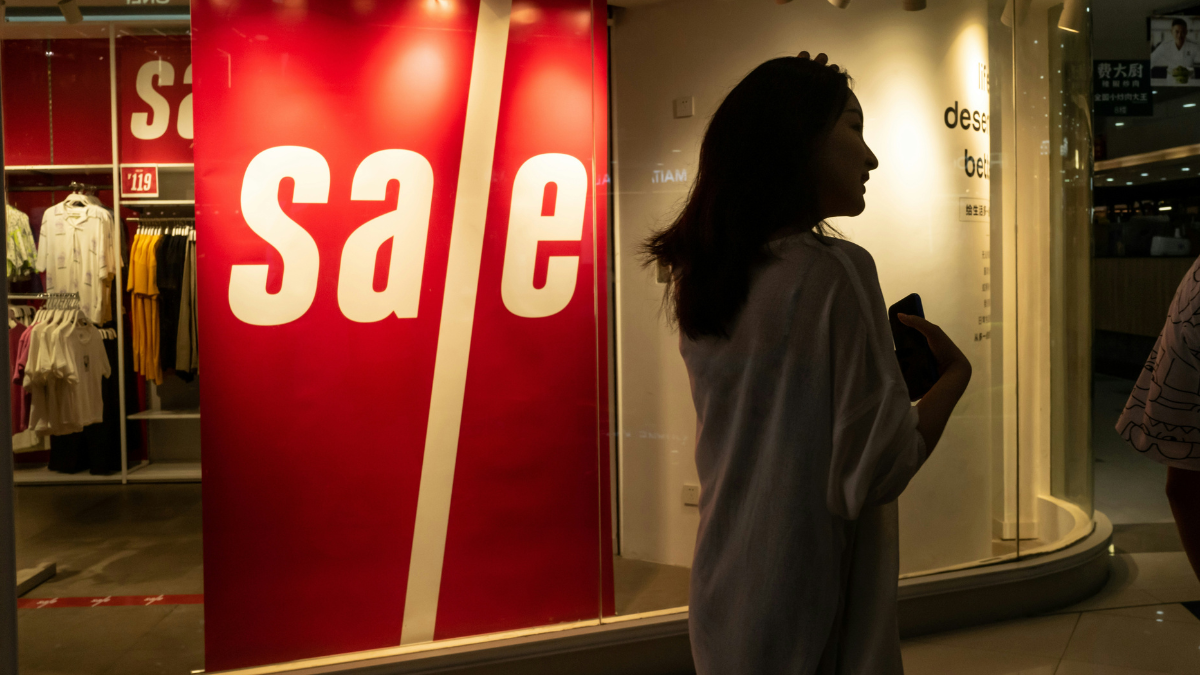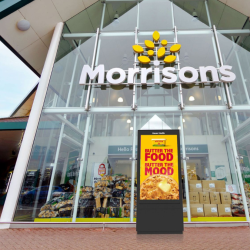JustWatch was founded in 2014 on the belief that targeting movie fans based on their taste is more effective than going after demographics.
The business has two sides: a streaming guide for consumers, and a media buying and insights platforms for entertainment clients — with the latter part being given its own brand identity as JustWatch Media two years ago.
JustWatch Media works with brands like Universal, Paramount and Sony, using data on the viewing habits of over 60 million monthly users to help the entertainment companies tailor their marketing campaigns to specific audiences. JustWatch Media also offers creative services to clients, optimising ad formats for digital platforms.
David Croyé, one of the six founders of JustWatch, talks to MediaCat UK about the virtues of taste profiling, the difference between tech and media companies, and the shifts in digital ad platforms.
Why do you want to change the way media is bought?
[When I started the platform] I wanted our streaming guide to be a tool and saw that there was a better way to reach people. [At least], better than what was being done by the current networks and agencies.
I used to get a lot of horror trailers from Warner Bros., and I hate horror. But I didn’t get rom-com trailers. I thought [the industry should be] more about taste, which is specific, especially for movies and TV shows. But in order to know about what people actually like, you need to have a lot of fresh data.
We use data from our streaming guide to reach people based on taste, instead of how old they are, or if they are male or female.
You say you act like a tech company and not a media company, what’s the difference?
We have a data management platform, which we developed, where we store all interactions with our apps. So whatever you click, search, or put on your watch list; if you give us the opt-in to use your data and build a profile, then we can find what you like through our recommendation engine.
We can also use it for profiling the kind of movies you might like and using [that data for campaigns] on YouTube, Meta, TikTok, and other platforms. We built the DSP for that, as [our team] has a tech background. JustWatch is an end-to-end vertically integrated product; from our own first-party data down to insights using the data and making optimisations automatically. We build everything with our own tech, BI and data science teams. [Technology] is a big part of our company.
Your platform builds taste-based audiences based on movie and TV habits. Why is taste more important than standard demographic targeting?
I mentioned horror earlier… I don’t like horror, but I’d be a standard demographic fit. I like rom-coms but I’m not the standard demographic for [that genre]. Everyone has their own reasons for what they like to watch and what they currently watch, and tastes change. It’s much better targeting when we look at the performance of these [taste-based] groups. They’re better when it comes to view and engagement rates, but also intent to watch something.
JustWatch measures intent and optimises towards audiences most likely to take action (buying a cinema ticket, subscribing to a platform). How exactly do you measure intent?
When we started, we looked at different media metrics, and none of them correlated to the box office. That’s why, nine years ago, we began to survey subgroups of audiences, ones we would target in campaigns. Instead of showing them a trailer we’d show them an ad that says: ‘Do you plan to go to the cinema to watch this movie?’ That’s what we call cinema intent.
We’d have a percentage like: ‘78% of this audience said yes, they want to watch this movie at the cinema’, versus another audience where it’s maybe 56%. We do those surveys on the actual audience we build for campaigns, and check every week, and sometimes even three to six months before release.
These surveys correlate highly with actual ticket sales. If we have high cinema intent, a title will sell a lot of tickets. If it’s low intent, it will not. View through and engagement rates are basically the same. We use integrated market research on actual audiences to have a tool that’s actionable, that we can directly make decisions [in terms of] where we can optimise for ticket sales, instead of just awareness or engagement metrics.
Are clients becoming more demanding in terms of measurement and effectiveness? If so, how are you serving that demand?
It’s not easy in the entertainment industry when it comes to theatrical campaigns. You have distributors and cinema chains, and getting them all together to track everything is hard. We’ve managed to track hundreds of movies with a tracking pixel, so we can see millions of ticket sales and can look at conversion rates.
The second [area] is incrementality, and exposed versus unexposed groups, where you define a holdout group. We were able to do this in a few markets, in particular Germany where the cinema landscape is 50% independent cinemas, and most of them use the same ticketing provider. We could track a lot, and did the same in France, Portugal, Italy, and partially in Spain.
A lot of markets have this tracking potential, [but the issue is] more on a political side than a technical one. However, most clients are just looking for awareness uplifts.
Also, when it comes to theatrical [clients] we know more about tracking than we do with streaming [studios]. This is either because they don’t have tracking integrated because they are so big, or they don’t want Meta or Google to know about their own conversions. Within the entertainment industry most [studios and streamers], in general, don’t really know much about the effectiveness of their campaigns.
What shifts have you seen in audience tastes in recent years, and how has that impacted ad campaigns for studios and streamers?
Tastes are always changing. Like, Stranger Things pushed eighties themes. I think the only big trend is that westerns have been going down for some time. Of course, anime is growing, and things Americans would call ‘foreign movies or shows’.
We get asked [this question] a lot, but you normally see the trend yourself pretty quickly, and it’s often based on specific titles. On the one side, you have new shows, and on the other people still watch Friends. It ebbs and flows.
Your ad work for clients primarily focuses on YouTube, Facebook and Instagram. Have you seen any recent shifts in terms of effectiveness in those channels? Any growth or changes in peripheral or less mainstream channels?
The biggest shift that we’re starting to see — which should have happened years ago — is that [studios, streamers and distributors] are starting to think digital-first… If your [audience is] under 40, there’s basically no country anymore where you can go TV-first.
Then it becomes a question of which platform can take the load from linear TV. What we’re seeing it’s that it’s mostly connected TV on YouTube.
What do you think of the open-web as an advertising channel?
We didn’t focus on it on purpose because it’s so fragmented, and there’s fraud and technical problems. We didn’t want to overcomplicate things, and we wanted to be the best in one vertical, integrating all technology, data, products and our service. So we said: ‘Where do people spend most of their time discovering new things? That’s the big social and video platforms. [Within those] it’s the same metrics and platforms, so it’s scalable.
We’re doing campaigns in over 100 markets and entertainment is global. It’s the same trailer in a different language, but in the end it’s pretty similar from country to country. There are [slight] differences in audiences and pricing, but it’s the same technology. Inventory might shift a lot between countries if you go open-web, and around 80-90% of entertainment budgets are on the big platforms anyway. So we thought about it, but it’s only 10% for the clients we have, and getting smaller.
So, open-web advertising is getting smaller?
Open-web programmatic got smaller because it’s a lot of display, and the video is often like a little post stamp that you [easily scroll past] on a website. It’s not often high quality, and it’s complicated. It’s basically easier to run through a few big partners. Plus it’s getting smaller because it’s too fragmented, there’s too much fraud, and it’s not scalable.
If Meta has to sell Instagram, what impact do you think this will have on your media plans?
It depends on who would or could buy it, and what they would do with it. We would probably shift, I don’t know, 70% of the media away from Meta to the new owner because, for entertainment buying, I think we’re up to 75% when it comes to video on Instagram. This would mean a big exit for these video ad-driven units, but when it’s more about clicks and performance, Facebook still has better ad formats. [Facebook] still reaches a lot of younger people but, of course, that’s declining.
I wonder if [a sale] would bring about more changes in terms of how the platform looks. When you look at TikTok they basically copied a lot of the advertising systems that Meta built. It depends if [the new owners] keep targeting and everything else the same, like the back end. I think they would probably have to, so it would be a minor difference for us.
How much of the database and media sides of JustWatch is powered by AI? And any further uses of AI planned, in terms of adding value to your platform?
We started using AI around 11 years ago, in the form of machine learning for recommendation algorithms. Like Amazon’s ‘you might like this if you bought that’, but for movies. This is based on user data and metadata we collect, which we had in there from the start. We also use machine learning algorithms to build taste-based audiences, and have algorithms for bidding.
We’re starting to produce more video content, which we couldn’t do before because it would be too much work across 140 markets. New AI tools finally allow us to do this, and we’re working on things that [will help us] scale across markets and languages, and produce a lot of content we couldn’t do before.
What’s next for JustWatch Media? Would you ever think about expanding beyond entertainment?
That’s a good question. We’re just scratching the surface. We only have a few per cent in most markets, [in terms of] potential clients and agency partners. So it’s about doing more of the same and getting better at that. That’s my boring, German way of saying we want to be the best at one thing, instead of mediocre at lots of things.
[Beyond the core business] we’ve been doing work with sports and gaming, because they have trailers. If the IP is related to movies or taste then we are, or can, run campaigns for game studios and their agencies. That’s a natural extension. Perhaps a bit opportunistic, but we want to do more of that.
On sports, we’re already integrated, and have run sports campaigns for streamers in a lot of countries. So I’d say sports and console games are two things we’re working on, but they’re still pretty small compared to what we’re doing on movies and TV show release campaigns.
The last thing might be in a brand direction — product placements in movies or TV shows. Let’s say on Netflix you want to reach the right audience with your own ads that use and leverage parts of the trailer or show that you have product placement on. So this is more brand-driven, but it’s related to entertainment content and entertainment audiences.
Corrections 2.6.25: An earlier version of this story misstated the number of founders of JustWatch as five, and the number of monthly viewers in its database as 40 million. The story has also been amended to clarify that the media insights part of JustWatch was part of the business from the beginning, and was only given its own brand identity, as JustWatch Media, two years ago.

















